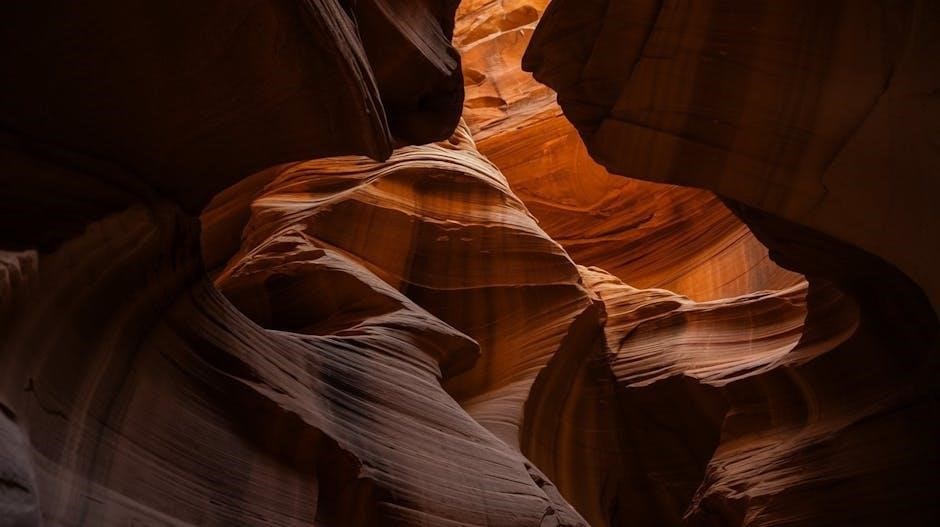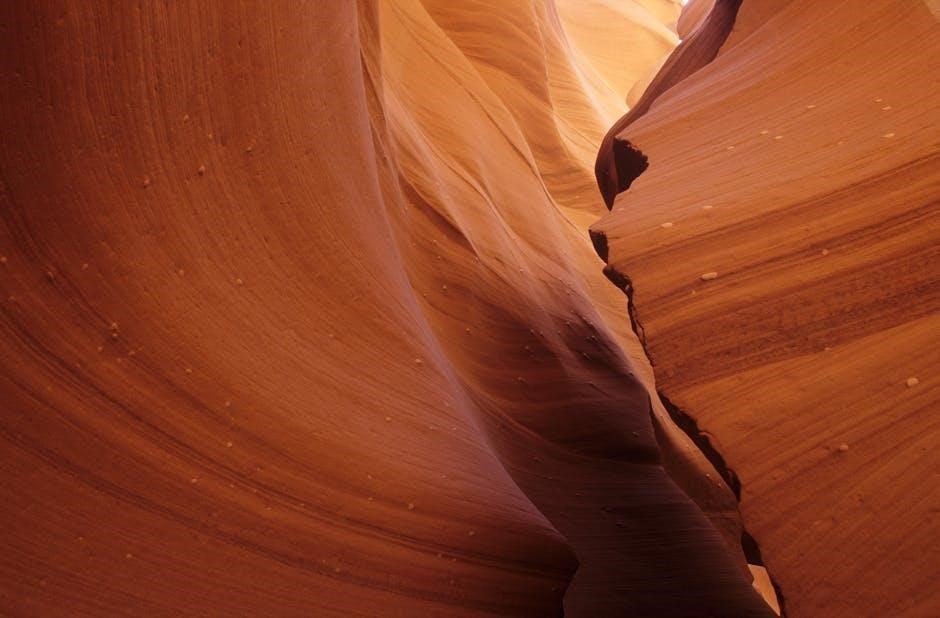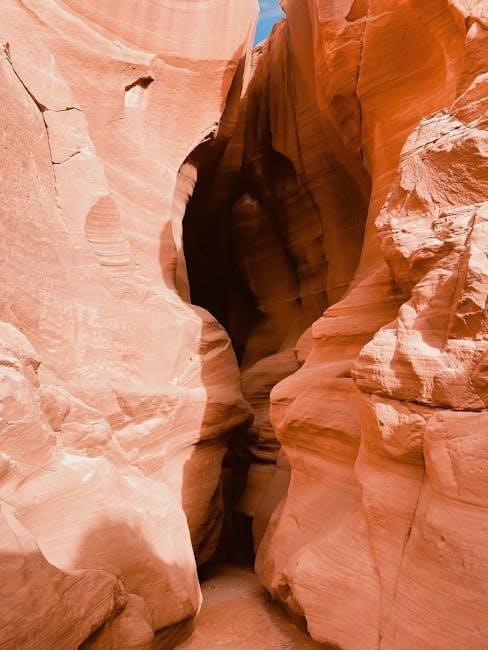Can You Hike Antelope Canyon Without a Guide?
Yes, but only by kayaking to Antelope Canyon Cove and hiking up without a Navajo guide. This offers an alternative to traditional guided tours.
Antelope Canyon, located on Navajo Nation land near Page, Arizona, is one of the most iconic natural wonders in the American Southwest. Known for its breathtaking slot canyon formations, it attracts millions of visitors annually. The canyon’s unique sandstone walls, carved by centuries of erosion, create mesmerizing light beams and vibrant colors, making it a paradise for photographers and adventurers alike. While Upper and Lower Antelope Canyon are the most popular sections, there are also lesser-known areas like Canyon X. The canyon’s fragile environment and cultural significance have led to strict regulations, ensuring its preservation for future generations.
Visitors often wonder if they can explore this stunning landscape independently. However, due to its protected status, most sections of Antelope Canyon require guided tours. This ensures safety, environmental protection, and respect for Navajo traditions. Despite these restrictions, there are alternative ways to experience the canyon’s beauty, such as kayaking to Antelope Canyon Cove and hiking up from the water. These options allow for a more self-directed adventure while still adhering to Navajo Nation guidelines.
Overview of the Question: Hiking Without a Guide
Hiking Antelope Canyon without a guide is possible but limited to specific sections and methods. While traditional tours require licensed Navajo guides, kayaking to Antelope Canyon Cove offers an alternative. This approach allows visitors to paddle to the canyon’s entrance and hike independently. However, this option is only available for certain parts of the canyon, such as the cove area, and does not provide access to the more popular Upper or Lower Antelope Canyon sections. These areas remain restricted to guided tours due to their fragile environment and cultural significance. The Navajo Nation enforces these regulations to preserve the canyon’s natural beauty and ensure visitor safety. For those seeking a self-guided experience, kayaking and hiking from the water provide a unique way to explore Antelope Canyon while adhering to the rules set by the Navajo Parks and Recreation Department.

Regulations and Requirements for Visiting Antelope Canyon

Visitors must obtain permits and join guided tours led by Navajo-licensed guides to explore most areas, ensuring preservation and safety. Self-guided access is limited to specific sections like the cove;

Navajo Nation Land and Permit Requirements
Antelope Canyon is located on Navajo Nation land, making permits and guided tours mandatory for most sections. Visitors must obtain a permit and join a Navajo-licensed guide to explore the canyon. Self-guided hikes are restricted, except for specific areas like the cove. The Navajo Parks and Recreation department enforces these rules to preserve the land and ensure visitor safety. Accessing the canyon without proper authorization is prohibited. Additionally, certain items like bags, tripods, and food are not allowed inside the canyon. These regulations help protect the site’s cultural and natural significance, ensuring it remains accessible for future generations. Visitors must adhere to these guidelines to respect the Navajo Nation’s land and heritage.
Guided Tours: Why They Are Mandatory
Guided tours are mandatory for visiting Antelope Canyon due to its location on Navajo Nation land and the need to preserve the area’s natural and cultural heritage. Licensed guides ensure visitor safety, provide historical insights, and help protect the fragile environment. They also manage crowd control, preventing overcrowding and damage to the canyon’s formations. Without a guide, visitors risk navigating dangerous terrain unprepared and missing out on the canyon’s cultural significance. Guides are trained to handle emergencies and share stories about the canyon’s history, enhancing the overall experience. Additionally, the Navajo Nation requires all visitors to be accompanied by a certified guide to maintain the integrity of the land and its traditions.
Importance of Licensed Guides
Licensed guides are crucial for a safe and enriching experience in Antelope Canyon. They possess in-depth knowledge of the canyon’s unique formations and history, ensuring visitors gain a deeper appreciation of the site. Guides are trained to handle emergencies and navigate the challenging terrain, reducing the risk of accidents. Additionally, they play a key role in preserving the canyon’s fragile environment by enforcing rules that prevent damage to the natural structures. By accompanying visitors, guides help maintain the integrity of the Navajo Nation’s land and cultural heritage. Their expertise not only enhances the tour but also ensures that visitors respect and protect this natural wonder for future generations. Furthermore, guides often share captivating stories and legends about the canyon, enriching the visitor’s understanding and connection to the land they visit.
Options for Visiting Antelope Canyon Without a Guide
Visitors can kayak to Antelope Canyon Cove and hike up the canyon or explore specific sections like Canyon X without a traditional guided tour.
Kayaking to Antelope Canyon Cove
Kayaking to Antelope Canyon Cove offers a unique way to explore the canyon without a traditional guided tour. Visitors can rent or launch their kayaks at Antelope Point Launch Ramp, paddling toward the cove. Upon reaching the lake’s edge, where it meets the dry wash, kayakers can beach their craft and begin hiking up the canyon. This method provides an alternative to standard tours, allowing for a more personal and immersive experience. While this approach avoids a Navajo guide, it’s important to note that other sections of Antelope Canyon still require guided tours. Kayaking and hiking offer a peaceful way to discover the canyon’s natural beauty, but visitors must adhere to Navajo Nation regulations and respect the land.
Hiking Up the Canyon from the Water
Hiking up Antelope Canyon from the water is a unique and adventurous way to explore the canyon without a traditional guided tour. After kayaking to the cove, visitors can beach their kayaks where the lake meets the dry wash and begin their hike. This approach allows for a self-guided experience, offering breathtaking views of the canyon’s iconic sandstone formations. However, it’s important to note that while this method bypasses the need for a Navajo guide, visitors must still obtain the required permits and adhere to Navajo Nation regulations. The hike provides an opportunity to immerse oneself in the canyon’s natural beauty at a personal pace, making it a sought-after option for those seeking a more independent adventure.
Differences Between Upper, Lower, and Canyon X
Antelope Canyon is divided into three distinct sections: Upper, Lower, and Canyon X, each offering unique experiences for visitors. Upper Antelope Canyon is the most accessible and popular, known for its breathtaking light beams and photogenic landscapes. Lower Antelope Canyon is longer and requires a more physical hike, involving climbing ladders and navigating narrower passages. Canyon X, the least visited, combines both upper and lower canyon features, offering a tranquil and less crowded experience. While Upper and Lower Canyons are typically visited via guided tours, Canyon X can sometimes be accessed by kayaking to the cove and hiking up without a Navajo guide, making it a sought-after option for those seeking a more secluded adventure.

Why Guided Tours Are Highly Recommended
Guided tours ensure safety, preserve the canyon, and provide cultural insights, making them essential for a responsible and enriching Antelope Canyon experience.
Preservation and Safety Reasons
Guided tours are crucial for preserving Antelope Canyon’s fragile environment and ensuring visitor safety. The Navajo Nation enforces strict regulations to protect the site from overcrowding and damage. Licensed guides help maintain the canyon’s natural beauty by educating visitors on how to respect the land. Additionally, guides are trained to handle emergencies and navigate the canyon’s challenging terrain, reducing risks associated with hiking in a remote area. Without guidance, visitors might unintentionally harm the environment or face safety hazards. Prohibited items like bags and food are restricted to prevent littering and protect the canyon’s pristine condition. By adhering to these measures, guided tours play a vital role in safeguarding Antelope Canyon for future generations while ensuring a safe and enjoyable experience for all visitors.
Cultural and Historical Insights
Guided tours of Antelope Canyon offer invaluable cultural and historical insights into the Navajo Nation’s heritage. Knowledgeable guides share stories about the canyon’s spiritual significance, ancient petroglyphs, and the history of the Navajo people. Visitors learn about the importance of the land and its role in Navajo traditions, fostering a deeper appreciation for the site. Without a guide, much of this cultural context would be lost, as the canyon’s history and legends are not widely documented for self-guided exploration. The tours also highlight the Navajo Nation’s efforts to preserve their land and traditions, ensuring that visitors understand and respect the site’s cultural significance. This enriches the overall experience, making it more than just a hike—it becomes a journey into the heart of Navajo culture and history.
Benefits of a Guided Experience
A guided tour offers numerous benefits when exploring Antelope Canyon. Licensed guides provide expert knowledge about the canyon’s geological formations, ensuring a deeper understanding of its natural wonders. They also share cultural insights, explaining the historical and spiritual significance of the land to the Navajo people. Guides are trained to ensure safety, navigating visitors through challenging terrain and avoiding potential hazards like flash floods. Additionally, they often have exclusive access to less crowded areas, enhancing the overall experience. The tour guides’ expertise allows visitors to capture stunning photographs, as they know the best angles and lighting conditions. Overall, a guided tour enriches the visit, combining education, safety, and unforgettable memories.
Necessary Preparations for Visiting Antelope Canyon
Obtain permits, choose the right canyon section, plan your itinerary, pack essentials like water and snacks, and understand weather and safety conditions before your visit.
Obtaining the Required Permits
Visiting Antelope Canyon requires obtaining a permit from the Navajo Nation Parks and Recreation department. These permits are mandatory for all visitors, ensuring conservation and controlled access to the canyon. The permit fee is typically $8 per person, and valid identification must be shown upon entry. Permits can be purchased through authorized tour operators or at the entrance, though advance booking is highly recommended due to limited availability. Failure to present a valid permit can result in denied entry. The permit system helps protect the fragile environment and cultural heritage of the canyon, making it a crucial step in planning your visit. Always ensure your permit is valid for the specific section of the canyon you intend to explore, as access varies between Upper, Lower, and Canyon X.
Choosing the Right Section of the Canyon
Antelope Canyon is divided into three main sections: Upper, Lower, and Canyon X, each offering unique experiences. Upper Antelope Canyon is the most accessible and famous for its light beams, making it ideal for photographers. Lower Antelope Canyon is more rugged, requiring ladder climbs, and is better suited for adventurous hikers. Canyon X combines elements of both, offering a quieter experience with stunning formations. Choosing the right section depends on your physical ability, interest in photography, and desire for crowds or solitude. All sections require a permit and guided tours, except for the kayak-and-hike option to the cove, which allows exploration without a traditional guide. Understanding the differences ensures a personalized experience tailored to your preferences and abilities.
Planning Your Itinerary
Planning your visit to Antelope Canyon requires careful consideration of time and logistics. For a half-day tour, arrive at Antelope Point Launch Ramp by 8:30 a.m. to rent or launch your kayak. Begin paddling toward the cove by 9:00 a.m., reaching the entrance around 11:00 a.m. Beach your kayak where the lake meets the dry wash and start your hike. Allocate at least two hours for kayaking and 1.5 hours for hiking, depending on your pace. Check weather conditions beforehand, as strong winds or storms can impact your plans. Ensure you have enough time to return before sunset, as navigating in the dark is unsafe. Physical stamina is essential, so plan breaks and stay hydrated. A well-organized itinerary ensures a smooth and enjoyable experience exploring Antelope Canyon’s stunning landscapes.
Packing Essentials for the Hike
When preparing for your Antelope Canyon hike, it’s crucial to pack wisely. Bring plenty of water, snacks, and sun protection, including sunscreen and a hat, as the Arizona sun can be intense. Wear sturdy, comfortable hiking shoes suitable for uneven terrain. A lightweight backpack is ideal for carrying essentials without hindering your mobility. Avoid bringing prohibited items like bags, purses, tripods, or selfie sticks, as they are not allowed in the canyon. Don’t forget extra batteries for your camera to capture the stunning scenery. While food and drinks are prohibited inside the canyon, plan to eat before or after your hike. Always check Navajo Nation regulations for specific restrictions to ensure a smooth and enjoyable experience. Proper preparation will help you focus on the breathtaking beauty of Antelope Canyon.
Understanding Weather and Safety Conditions
Understanding the weather and safety conditions is vital for a safe Antelope Canyon hike. The Arizona desert climate means extreme heat, so hydration and sun protection are essential. Flash floods can occur unexpectedly, especially during monsoon season, so check weather forecasts before heading out. Wear sturdy, comfortable clothing and shoes suitable for uneven terrain. Be aware of loose rocks and steep drop-offs, as the canyon’s narrow passages can be hazardous. Stay alert for changing conditions and follow all safety guidelines provided by your guide or signage. Avoid hiking during heavy rain or thunderstorms, as this increases the risk of flash floods. Always stay with your group and keep children close. Respecting the environment and safety rules ensures a safe and enjoyable experience exploring Antelope Canyon’s stunning landscapes.
Visiting Antelope Canyon without a guide is possible via kayak, but most areas require licensed tours for safety and preservation. Respect regulations for a safe experience.
Final Thoughts on Hiking Antelope Canyon Without a Guide
While hiking Antelope Canyon without a guide is possible via kayak access, most areas still require licensed tours for safety and preservation. Visitors must obtain permits and respect Navajo Nation regulations. Exploring without a guide limits access to certain sections, and guided tours remain the best way to experience the canyon’s depths. Licensed guides provide cultural insights, safety expertise, and knowledge of the canyon’s history, enhancing the overall experience. For those seeking adventure, kayaking to the cove and hiking up offers a unique alternative, but it’s essential to adhere to all rules and respect the land. Whether guided or self-guided, Antelope Canyon promises breathtaking beauty, making it a must-visit destination in Arizona.
Encouragement to Follow Regulations
Visitors are urged to respect Antelope Canyon’s strict regulations to ensure preservation and safety. Hiking without a guide is only possible via kayak access, but most areas require licensed tours. Permits and Navajo Nation rules must be followed to protect this fragile environment. Guides provide essential knowledge and safety, while unregulated access risks damage to the canyon and its cultural heritage. By adhering to guidelines, visitors help maintain the canyon’s beauty for future generations. Your cooperation supports conservation efforts and fosters a respectful relationship with Navajo lands. Remember, responsible tourism is key to preserving Antelope Canyon’s natural and cultural wonders for everyone to enjoy.



